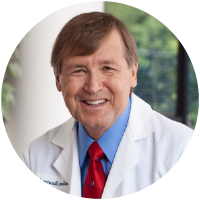
Heart attacks are often thought of as something that happens when we reach a certain age. Our age is certainly a significant risk factor—the average age for a first heart attack is 72 for women and 65 for men. But younger people are not off the hook. Over the years, I’ve seen men as young as 24 and a woman who was just 18 years old suffer heart attacks.
Unfortunately, heart attacks in young people aren’t as rare as they once were. While the overall incidence of heart attacks has decreased, the rates in people under age 50 have not declined in a similar fashion. In fact, Harvard researchers reported that the heart attack rate is actually increasing in the “very young” (40 and under)—an age group that typically never gives heart disease a second thought.
Let’s explore the reasons for this increase and how you and your loved ones can protect yourselves.
What Causes a Heart Attack in a Young Person?
Whether you’re 18 or 80, the most likely cause of a heart attack is coronary artery disease. The underlying problem is atherosclerosis—a buildup of plaque in the artery walls. A heart attack occurs when a plaque ruptures and blood clots are formed that block, or severely restrict, the flow of blood in an already-narrowed coronary artery. When tissues are deprived of oxygen-rich blood, damage begins within minutes. The extent of damage to the heart muscle from a heart attack depends on how quickly blood flow is restored.
Although coronary artery disease is far and away the dominant cause of heart attacks, there are other potential causes, some of which are more common in younger people.
- Coronary artery spasm: Temporary constriction that significantly reduces blood flow.
- Cardiomyopathy: Enlargement and weakening of the heart muscle.
- Myocarditis: Inflammation of the heart, usually related to an infection.
- Congenital problems: Structural or anatomical problems of the heart.
- Spontaneous coronary artery dissection (SCAD): A tear in an artery that may cause a blood clot and curb blood flow. Although this condition is rare, it is most common in younger women. In fact, 40% of heart attacks in women under age 50 are attributed to SCAD.
I want to say a word about sudden cardiac arrest. Unlike heart attacks, which are more or less a plumbing problem, cardiac arrest is a malfunction of the heart’s electrical system that causes the heart to stop beating. Unless normal heart rhythm is restored immediately, survival is unlikely. Cardiac arrest can be triggered by a structural abnormality, which is often the case in sudden cardiac death in children and adolescents. The main cause in adults, however, is coronary artery disease.
Why Are Heart Attacks Increasing in Younger People?
The risk factors for coronary artery disease are the same regardless of your age. The problem is that because of the average American’s sedentary lifestyle, poor diet, increased likelihood of obesity, and unmanaged stress, these risk factors are affecting people at earlier ages.
- Diabetes: Experts attribute much of the increase in heart attacks to a rise in diabetes. According to the latest CDC statistics, 17.5% of Americans aged 45–64 have diabetes. One in five people under age 50 who have a heart attack also have diabetes—and having both conditions is linked with a higher risk of death and repeat heart attacks.
- Hypertension: The CDC also reports that more than half of 40- to 59-year-olds and a third of adults under age 40 have high blood pressure, which is another major risk factor.
- Smoking: We have made huge strides in reducing smoking rates, but about 15% of Americans under age 65 still smoke, which doubles—or even quadruples—your risk of heart disease.
- Cholesterol: High levels of inflammatory LDL cholesterol and imbalances in other lipids affect people of all ages.
- Substance abuse: Young heart attack survivors are more likely to have used marijuana and cocaine. Alcohol abuse, however, is more often a factor in older people.
- Obesity: Inactivity plus an unhealthy diet have led to a surge in obesity. More than 20% of adolescents, 40% if adults age 20–39, and nearly 45% of those who are 40–59 are obese. This reflects poorly for our nation’s cardiovascular health.
Another reason for the rise in heart attacks is that younger people tend to think they couldn’t possibly have heart disease, let alone a heart attack. As a result, not only are they less likely to work on risk factors but also more likely to dismiss signs and symptoms of a heart attack—which can be a deadly mistake.
How Can You Reduce Your Risk?
The good news is that most of the risk factors for heart disease are well within your control. You can’t change your genes, but even if you have a family history of premature heart disease, getting a handle on the following will go a long way toward preventing a heart attack.
- Exercise is vital. Inactivity is the single most prevalent risk factor for heart disease, so get moving. Whether you walk, dance, or play a sport, aim for at least 30 minutes of activity a day.
- If you smoke, quit. Smoking is hard on the heart and arteries because it slowly pushes up blood pressure at the same time that it encourages blood to clot—a lethal combo.
- Eat a heart-healthy diet. Most of us consume far too much sugar, which triggers the insulin response that leads to inflammation, diabetes, and heart disease. Cut down on sugar and carbohydrates and add more fiber-rich vegetables, healthy fats and proteins, and other whole foods to your daily regimen.
- Know the signs of a heart attack—and don’t dismiss them because you’re young. Women, be aware that your symptoms may be considerably different and far more subtle. This is important because women often fail to seek treatment in a timely manner and have lower heart attack survival rates.
- Don’t wait until your fourth or fifth decade of life to start following a heart-healthy lifestyle. As Benjamin Franklin said, "You may delay, but time will not, and lost time is never found again."
It’s Never Too Early to Protect Yourself
Cardiologists put a lot of emphasis on primary and secondary prevention: treating risk factors to prevent a first or subsequent heart attack. What you really need to focus on is preventing these risk factors from developing in the first place—and it’s never too early to start.
Maintaining a normal weight during childhood and adolescence reduces the risk of developing cardiovascular risk factors that often stick for life. Plus, a large study by Swedish researchers found that adults who had a high degree of fitness at age 18 were much less likely to have a heart attack three or four decades later.
The greatest gift you can give your family is a healthy start in life. Help your kids and grandkids develop good eating habits, make physical activity a part of their daily lives, and provide an example for them to follow. That’s a win-win for everyone.


